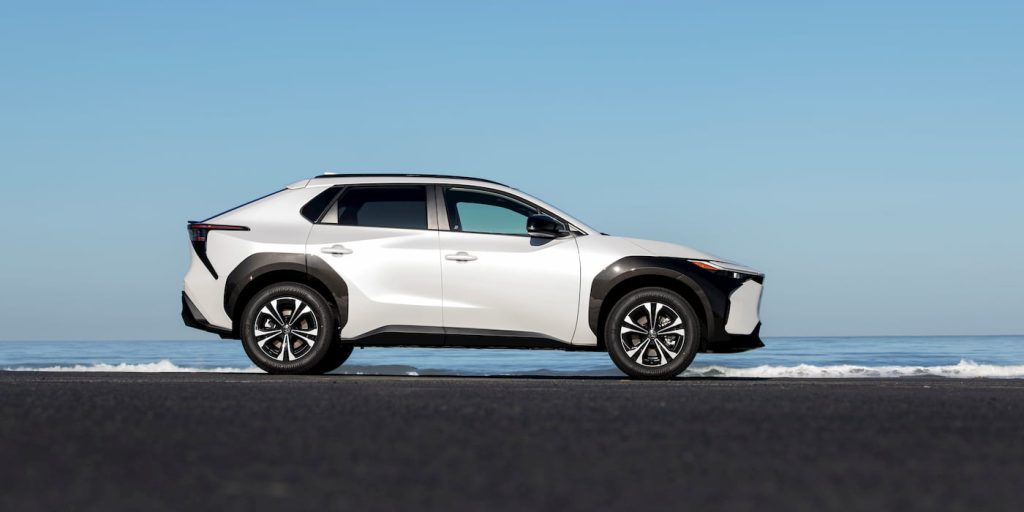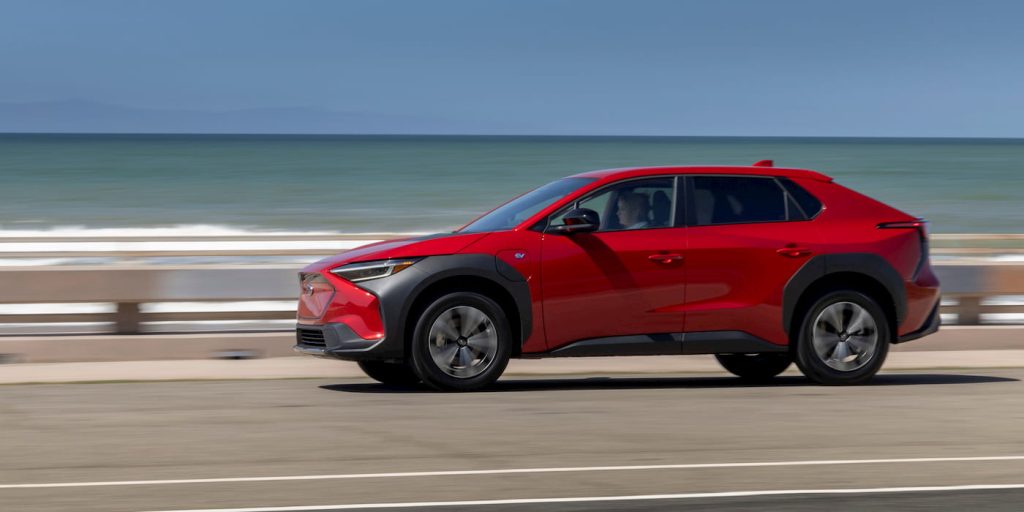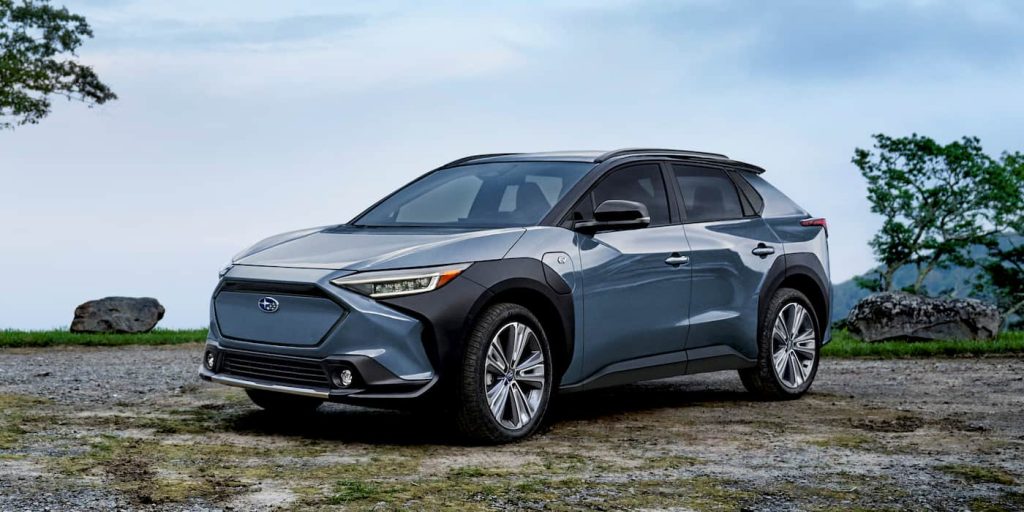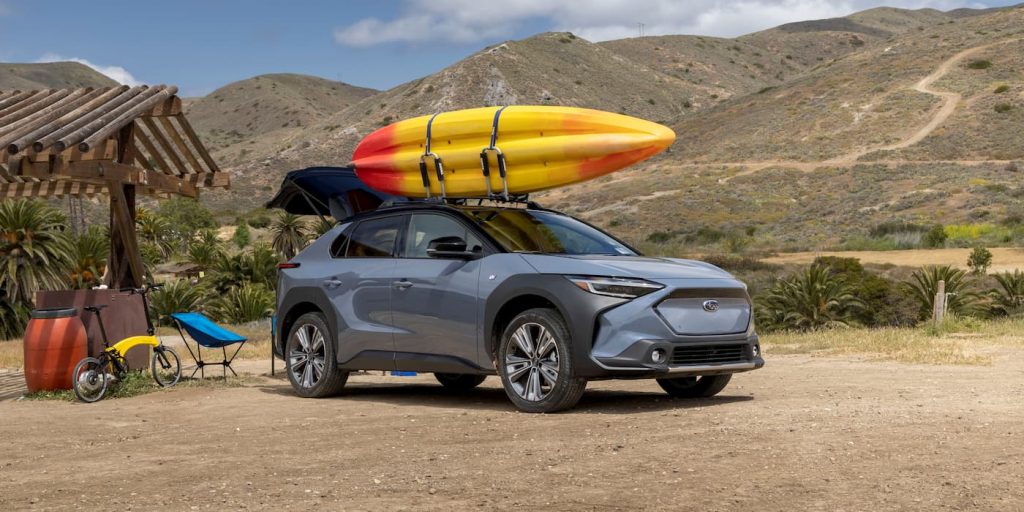
A new three-row Subaru electric SUV is expected to hit the market in the next few years. Toyota will build the EV at its manufacturing facility in Georgetown, Kentucky.
Toyota to build a new Subaru three-row electric SUV
According to sources familiar with the plans (via Automotive News), Toyota will begin building the new three-row electric SUV in 2025, shortly after starting production of its own larger EV model.
Toyota revealed at the end of May, it would begin assembly of its own three-row electric SUV, also expected to start in 2025. It is temporarily being called the bZ5X. (Hopefully, they can come up with something better.)
The move comes after Subaru joined forces with Toyota in 2019 to develop a new platform to launch a couple of electric SUVs under each brand.
The platform, which became known as e-TNGA, powers both of the Japanese automaker’s first electric SUVs, the Toyota bZ4X and the Subaru Solterra.


Toyota assembled both vehicles on the same line at its Motomachi assembly plant in Japan. Production was suspended last June after it was discovered that wheel hub bolts could loosen under certain driving conditions, which could cause the wheel the fall off while driving.
The temporary halt lasted over four months, with Toyota resuming sales last October. Although no other details were revealed about the new three-row electric SUV, Subaru vowed to release at least four electric crossovers in the US by the end of 2026.

Subaru’s electric SUV is expected to receive its batteries from Toyota’s new battery factory in North Carolina. The plant was initially revealed in 2021, with Toyota investing an additional $2.1 billion earlier this year, bringing the total to nearly $6 billion.
The NC facility will produce lithium-ion batteries across six production lines (although four are dedicated to hybrids).
With final assembly in Kentucky and battery packs sourced from NC, both Toyota and Subaru’s new three-row electric SUVs may enable them to qualify for the $7,500 EV tax credit. Neither the bZ4X nor the Solterra EVs are eligible.

Toyota plans to release ten new electric models, aiming for 1.5 million in EV sales by 2026. The automaker has recently advanced EV initiatives with plans for a dedicated EV platform, next-gen batteries, manufacturing improvements, and other innovations to increase competitiveness.
Subaru, on the other hand, aims for 40% of global sales to be electric by the end of the decade, with plans for an all-electric lineup by the “early 2030s.”
Electrek’s Take
Toyota owns roughly 20% of Subaru and looks to get the automaker and itself positioned for the future of the industry before it’s too late.
Japanese automakers have already fallen behind in China, the world’s largest EV market, but some are making more of an effort after seeing what can happen when a market transitions under its feet.
Producing EVs and batteries in the US can enable Toyota to take advantage of the tax credit provided by the Inflation Reduction Act, which will help it compete as the US moves to an all-electric future.
By utilizing Toyota’s assembly facility and battery production, Subaru can gain a (much-needed) footing in the US market.
Author: Peter Johnson
Source: Electrek



